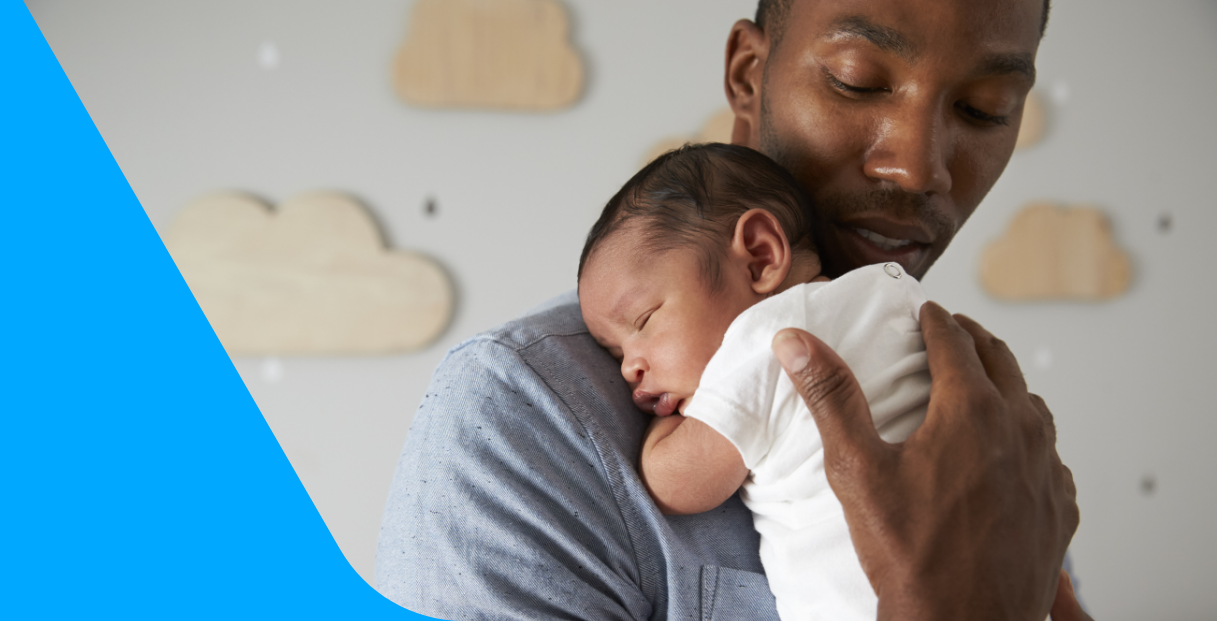Why Is Safe Sleep for Your Baby Important?
Before learning how to put your baby to sleep, it’s especially important to make sure that they are sleeping safely. Safe sleeping environments will decrease the risk of Sudden Infant Death Syndrome (SIDS), which is when a healthy baby suddenly dies in their sleep 1. SIDS most commonly occurs to babies during the first 6 months of life2,4.
One of the most important things you can do to reduce the risk of SIDS is to have your baby sleep on their back every night.1,4 Make sure to tell any close friends or family members that sometimes look after your baby about this rule so they are prepared for every naptime or night of sleep.1,4 The safest place to have your baby sleep is on a firm, flat mattress with a tightly fitted sheet in a crib that meets current Canadian safety regulations.1 Keep loose, soft items such as blankets, toys, mattress toppers, and bumper pads, out of the crib before bedtime.1 Exposure to nicotine and other harmful chemicals found in vapes and cigarettes can also put your baby at risk for SIDS, so make sure to avoid smoking near your baby.1
Preventing Plagiocephaly (Flat Head)
Babies are curious and will often turn their heads to look around while they are laying down. This may cause your baby to develop plagiocephaly, or flat head.1 To help prevent the risk of developing flat head, switch up the direction you lay your baby in to make sure that they are lying equally on both sides of their head.1 Soon after birth, start tummy time. Tummy time is important for preventing a flat head and will aid in the development of healthy muscles. In the first few weeks, try tummy time for short intervals (1-2 minutes) two to three times per day and then slowly build up to 10-15 minute intervals, several times a day 1.
How to Get Your Baby to Sleep
Before bedtime, set up a soothing routine to help them relax and let them know that it’s time to sleep.2 Giving your baby a bath or reading them a story can help them get comfortable. Avoid active play right before it’s time to sleep, as this can keep them excited and awake.2 Put your baby down for a nap in a quiet, dark room once they start to show signs of sleepiness2.
Swaddling can also help soothe your baby and improve sleep,but there are risks if not done properly1,5 If you decide to swaddle your baby, make sure to do it safely by using a lightweight blanket so your baby doesn’t overheat.1,5 Also, stop swaddling when your baby shows signs of rolling over, make sure your baby’s nose and mouth are not covered, and make sure your baby can still move their legs to avoid hip problems.1,5
Getting Your Baby to Go Back to Sleep
There are many reasons why your baby may wake up in the middle of the night. For example, they may be hungry or need a diaper change.2 If your baby is hungry, feeding your baby at the first sign of hunger may help them go back to sleep faster.2 Keep the lights low during nighttime feedings, use a soothing voice, and try not do anything that might excite them.2 As best as you can, stay calm while they cry, and put your baby back in their crib as soon as you’ve finished changing their diaper or feeding them.2
The Importance of Letting Your Partner Sleep
Your partner will need some time their body recover from the pregnancy. If your partner is suffering with postpartum depression, helping your partner get enough sleep is one way to offer support3. Taking over the bedtime duties and handling those wake-up calls from your baby will allow your partner to get the extra rest they need.
- https://www.canada.ca/en/public-health/services/health-promotion/childhood-adolescence/stages-childhood/infancy-birth-two-years/safe-sleep/safe-sleep-your-baby-brochure.html
- https://www.healthlinkbc.ca/pregnancy-parenting/parenting-babies-0-12-months/baby-care/quick-tips-getting-baby-sleep
- https://www.pregnancyinfo.ca/postpartum/postpartum/mental-health-and-postpartum-depression/
- https://caringforkids.cps.ca/handouts/pregnancy-and-babies/safe_sleep_for_babies
- https://caringforkids.cps.ca/handouts/pregnancy-and-babies/swaddling





